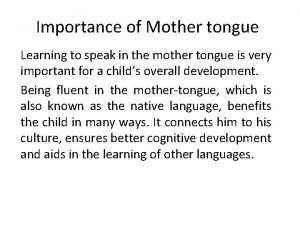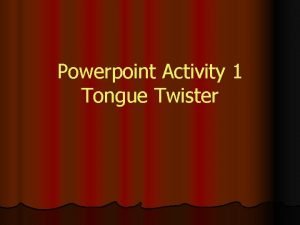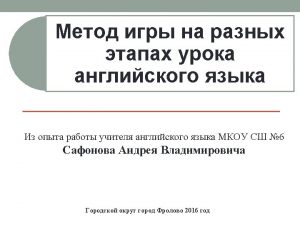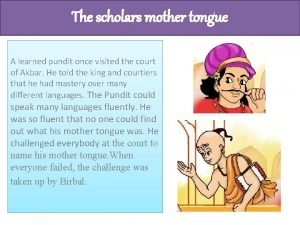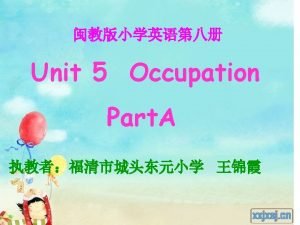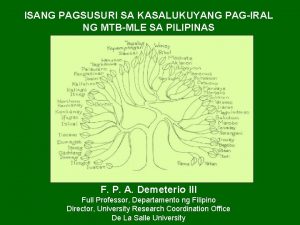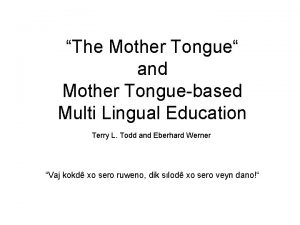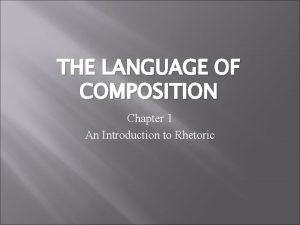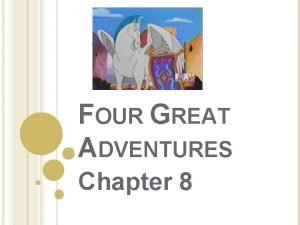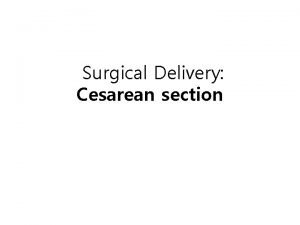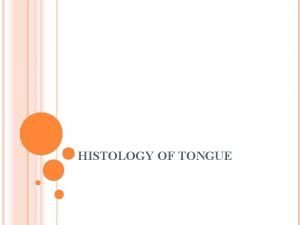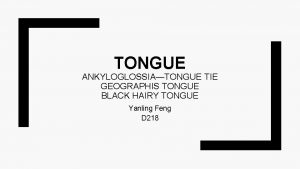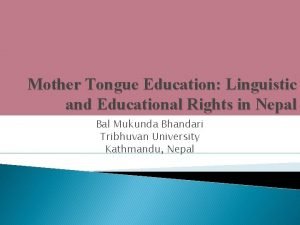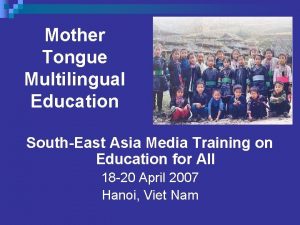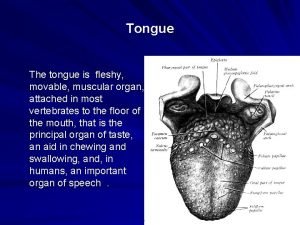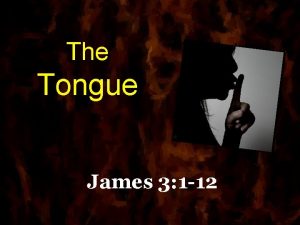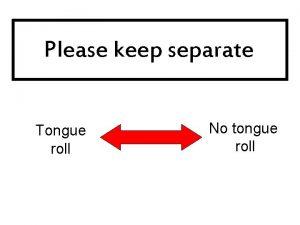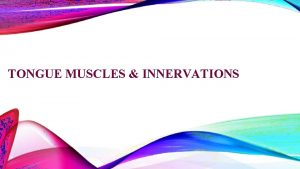ON DIRECTIONS OF THE MOTHER TONGUE EDUCATION IN
















- Slides: 16

ON DIRECTIONS OF THE MOTHER TONGUE EDUCATION IN THE SLOVAK REPUBLIC WHERE FROM? WHERE TO? WHICH WAY? WHY?

WHERE FROM? l In the 1970 s and in the 1980 s the MTE practice was influenced by the conception based on knowledge. l It was a separation of the linguistics and literature teaching/learning processes from its communicative context. l The interaction between teacher and student was focused on the reproduction of the subject knowledge.

WHERE TO? l In the 1990 s the MTE changed. l A new communicative model of MTE emerged (as a result of social, linguistic and methodology related shift). l The most principal objective of MTE – the developing of children‘s communicative competence.

A special principles of MTE l complexity l communicative approach l student-centred teaching l topical linguistic and literary context

WHICH WAY? CONTENTS l to balance cognitive and communicative component; l natural interconnection of linguistic knowledge with its communicative utilisation; values and attitudes; l integrated teaching/learning of mother tongue.

WHICH WAY? PROCESS l the approaching teacher – student interaction to more symetric and thus more functional communication; l the pupil‘s active, conscious, creative, critical approach to forming his knowledge structures; l the utilisation of the knowledge to real communicational situations.

Structure of the process l EVOCATION l REALISING OF MEANING l REFLECTION E–U–R (www. zdruzenieorava. sk)

New interactive strategies, methods and forms l Brainstorming l Clustering l Cinquain l INSERT l Mind table l T-scheme l Venndiagram l Guide of predictions l Cubing l Co-operative learning l Creative writing l Creative reading

WHY? l MTE in Slovakia is under the curricular reform of all its stages. l The reason – to adjust subject‘s contents to current reality as well as to pupil‘s prospective communicative needs.

The reform‘s essence la treating a pupil not as a passive object but rather an active agent of his own speech and congnition development

The reform‘s essence l an active and reflexive revealing of linguistic meanings and their relationships, together with the capability to utilise such meaning in a communicative microcosm and macrocosm of a child

The reform‘s essence l an integrated teaching/learning of the language, communication and literature l a system of basic communicative skills – listening, speaking, reading, writing – and strategies their development in the child‘s speech

Mulicultural approach Teaching the Slovak language as both the mother tongue and the official language hence adopts elements of multilingual integration

The multilingual integration l the languages of ethnic minorities (Roma, Hungarian, Ukrainian, Ruthenian); l the languages of native Slavic nations (especially Czechs); l the world languages (especially English, German, French, Spanish).

The main objective of MTE l the complex developing of pupil‘s communicative skills; l supporting the cultivation of pupil‘s individual speech behaviour; l multilingual and multiculture approach to the developing of children‘s communicative competence.

Ľudmila Liptáková, Ph. D. associate professor Slovakia Prešov University Faculty of Education The Department of Communicative and Literary Education liptak@unipo. sk
 Life is a dream mother teresa
Life is a dream mother teresa Mother tongue importance
Mother tongue importance Tongue twisters spring
Tongue twisters spring Drawing dictation
Drawing dictation What did the pundit challenge the courtiers with
What did the pundit challenge the courtiers with Mother tongue questions
Mother tongue questions Grandfather mother tongue
Grandfather mother tongue Multilingguwalismo na edukasyon ng 1960
Multilingguwalismo na edukasyon ng 1960 Communication in mother tongue
Communication in mother tongue Mother tongue
Mother tongue Mother tongue examples
Mother tongue examples Amy tan mother tongue main argument
Amy tan mother tongue main argument Four great adventures
Four great adventures C section slideshare
C section slideshare Hát kết hợp bộ gõ cơ thể
Hát kết hợp bộ gõ cơ thể Bổ thể
Bổ thể

